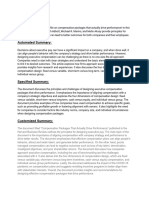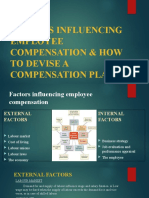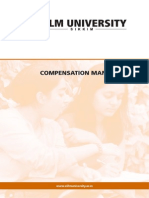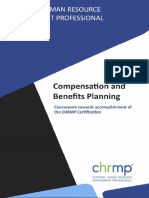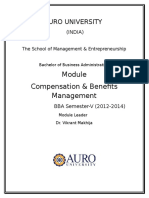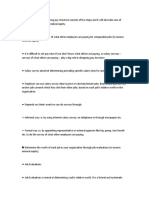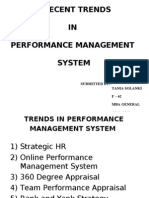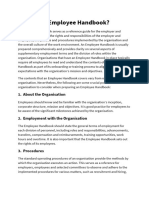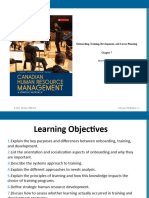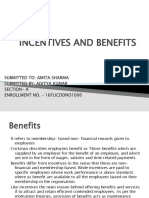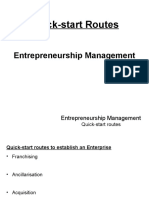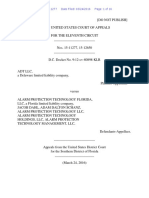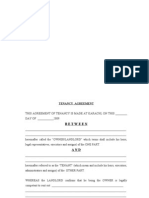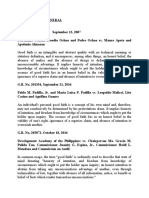COMPENSATION & CTC
WHAT IS COMPENSATION?
Compensation is the
remuneration received by an
employee in return for his/her
contribution to the
organization. It is an organized
practice that involves balancing
the work-employee relation by
providing monetary and nonmonetary benefits to
employees.
�COMPENSATIO
N
EMPLOYEE
COMPENSATION
EXECUTIVE
COMPENSATION
�EMPLOYEE COMPENSATION
Compensation of employees (CE) is measured by the
value of the remuneration in cash or in kind which an
employee becomes entitled to receive from an employer
in respect of work done, during the relevant accounting
period - whether paid in advance, simultaneously, or in
arrears of the work itself.
�EXECUTIVE COMPENSATION
Executive Compensation is
how top executives of
business corporations are
paid. This includes a basic
salary, bonuses, shares,
options and other company
benefits.
It has become integral part of
management.
��Aims of Employee Compensation
Attract capable employees to the
organization.
Motivate them toward superior
performance.
Retainment of their services over an
extended period of time.
�COMPENSATION
INCLUDES
DIRECT
PAYMENT
INDIRECT
PAYMENT
�salary
Fringe
Benefit tax
Taxable
To Employer
Applicable
To companies
Basic + DA+
Commission etc
Normal components
Allowances
Perquisites
Taxable
To
employee
9
�OBJECTIVES OF
COMPENSATION
Be Adequate - must work to
attract and retain staff in
those areas where the
international organization has
the greatest needs and
opportunities.
Be Cost Effective - should
facilitate transfer of
international employees in the
most cost-effective manner for
the firm and be easy to
� Be Motivating - should be
sufficient to motivate
employees to high
performance levels and
reinforce desired behaviors.
Be Equitable - employees
should be made to feel that
compensation system is
equitable, External & Internal
Equity.
�INTRODUCTION OF CTC
Cost to Company (CTC) is a term used to
describe an investment without return.
Cost to Company can also be used to refer
to the total cost that an organization is
spending towards their employee including
the Salary, Perks, Cost related to benefits,
Cost related to hiring, Training, Retirals,
Statutory Contributions etc.
� CTC is simply the money given to you + the money
spent on you
Includes both monitory and non-monitory.
Basic + DA + Performance linked pay + Bonus +
HRA + Allowances + Reimbursements + LTA +
Perks + Perquisites + Social benefits (like PF,
Gratuity, Superannuation) + Insurance + Medical
+ Reimbursements + Training costs + Meal
coupons+ Transport + Club membership fees +
other subsidies +.
�Basics
Gross Salary: is salary before deductions
Net Salary: is what you get after deductions
Deductions : PF + Taxes+ Loans etc.
CTC : CTC means Cost To Company
Cost to company (CTC) is the total cost that
an employee is incurring in a company.
�Compensation is always
comprehensive!
Short Term
Your take-home pay
Medium Term
Pay for Performance
Training to improve
your knowledge &
skill
Long-term
PF
Gratuity
Allowances
On-job learning
Superannuation
Reimbursements
Employee stock
options
Post retirement
health benefits
Social security
measures like
benevolent funds
Health insurance
Medical benefits
Judge the benefits holistically!
�Components of Cost to Company (CTC)
Salary
Basic
Dearness Allowance (DA)
Incentives or bonuses
Conveyance allowance
House Rent Allowance (HRA)
Medical allowance
Leave Travel Allowance or Concession (LTA /
LTC)
Vehicle Allowance
Telephone / Mobile Phone Allowance
Special Allowance.
�Basic salary
Basic salary is a fixed component of your take-home
pay for the work you do!
It is also the base of computations of other benefits like
PF, Gratuity, LTA and sometimes HRA
It is taxable and best if it is be around 40% of CTC.
The paradox here is higher ratio of basic salary means
more tax and low ratio means impact on social
benefits like PF and Gratuity etc.
�Allowance
Allowances paid to the employee
irrespective of the expenditure incurred
under the head of allowances.
Majority of the allowances are taxable
and few are partially taxable
Receipts are to be produced to get
partial exemption on tax
�Dearness Allowance
It is the allowances is paid to neutralize impact
of Inflation.
This is something like making cost-of-living
adjustments in your salary
Usually DA is linked to Consumer Price Index.
So, when the prices of commodities go up your
DA goes up. If they come down your DA comes
down! (It is very unlikely)
�House Rent Allowance
HRA is usually a major component of
salary slip.
Allowance given by the company
towards rent for an accommodation.
Actual HRA received
50% of salary (basic + DA) if residing in
a Metro, or else 40%
The amount by which rent exceeds
1/10th of salary (basic + DA)
�HRA and tax exemptions
You must have HRA component in your salary
You must be paying rent
Your spouse shouldn't be the owner of the house
You are not allowed to pay rent to your spouse and get tax
exemption! However, you can do claim tax exemption if you pay
rent to your parents or your relatives.
Amount eligible for tax exemption which ever is lowest of the
following 3 conditions
1. In Metros (Delhi , Mumbai,Kolkota and Chennai) 50% of
annual salary, for rest of India 40% of annual salary
2. Actual HRA Received from the company
3. The amount of rent actually paid in excess of 10% of annual
salary
Salary means Basic + DA + Perf. Linked bonus . (Allowances and
perquisites to be removed)
�Conveyance Allowance
Transport allowance is paid to meet traveling
expenses from residence to office
Amount up to Rs 800 per month (Rs. 9,600 per year) is
tax exempted no need to produce receipts.
City compensatory allowance
Paid to compensate the costs involved in a city life!
Taxable
�Leave Travel Allowance
LTA is for Travel with your family (Self,
Spouse and Children )to any place in India
The tax implication in layman's language is
simple ,Tax exempted if you provide proof of
travel and expenditure else taxable
Two LTAs in a block of four years is allowed
for tax exemption.
�Pay for Performance/Incentives
Pay for performance organizations give
a part of the salary as pay for
performance
The periodicity of payment may differ
from company to company
The amount received under this head is
taxable
�Bonus
Bonus payment in many organization is governed by
Payment of Bonus act 1965,India
Usually paid once an year, mostly profit sharing with
employees by the company some times as a percent of
basic to all employees or may be based on employees
performance and contribution
There can be many types .here are few
Profit / Gain sharing
Festival bonus
Joining bonus
Retention bonus
Employee referral bonus
Bonus is Taxable
�Reimbursements or Claims
Reimbursement of certain expenses like Phone,
Mobile, Internet etc.
Reimbursements are Tax free.
If you are entitled to Rest. 2000 Mobile expences,
and you have a bill of Rest. 1000, You will get only
Rs.1,000.
Remember it is an reimbursement not an
allowance!
�Medical Reimbursement
Medical expenditure incurred on self or
dependants
Amounts up to Rs.15,000 per is not
Taxable subject to submission of bills
Some organizations reimbursement
health insurance premium paid for
employee and his family. This is
exempted from tax
�Children Education allowance
Children Education Allowance is Paid to aid
children's education.
Rs 2,400 per year is tax-free.( Rs.100 Per
month per child up to 2 children)
Children Hostel allowance :
Rs 7,200 per year is tax-free.( Rs.300 Per
month per child up to 2 children)
�Fringe benefits
Humanistic consideration : education, health,
housing
Statutory : canteens, rest sheds, crche,
maternity, paternity,
Security : Gratuity, PF, Pension, Medical
Hazard of industrial life : ESIC, workmen
compensation act, Hospitals
Tax considerations : transport, interest free
loans, loans at concessional rates
Utilization of leisure time : holiday homes,
foreign trips, guest houses
Inculcating a sense of involvement :
concessional lunch, subsidized picnics
